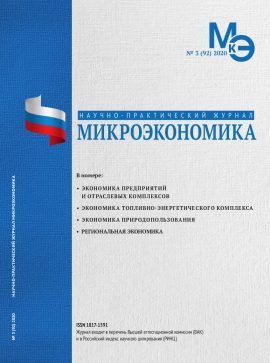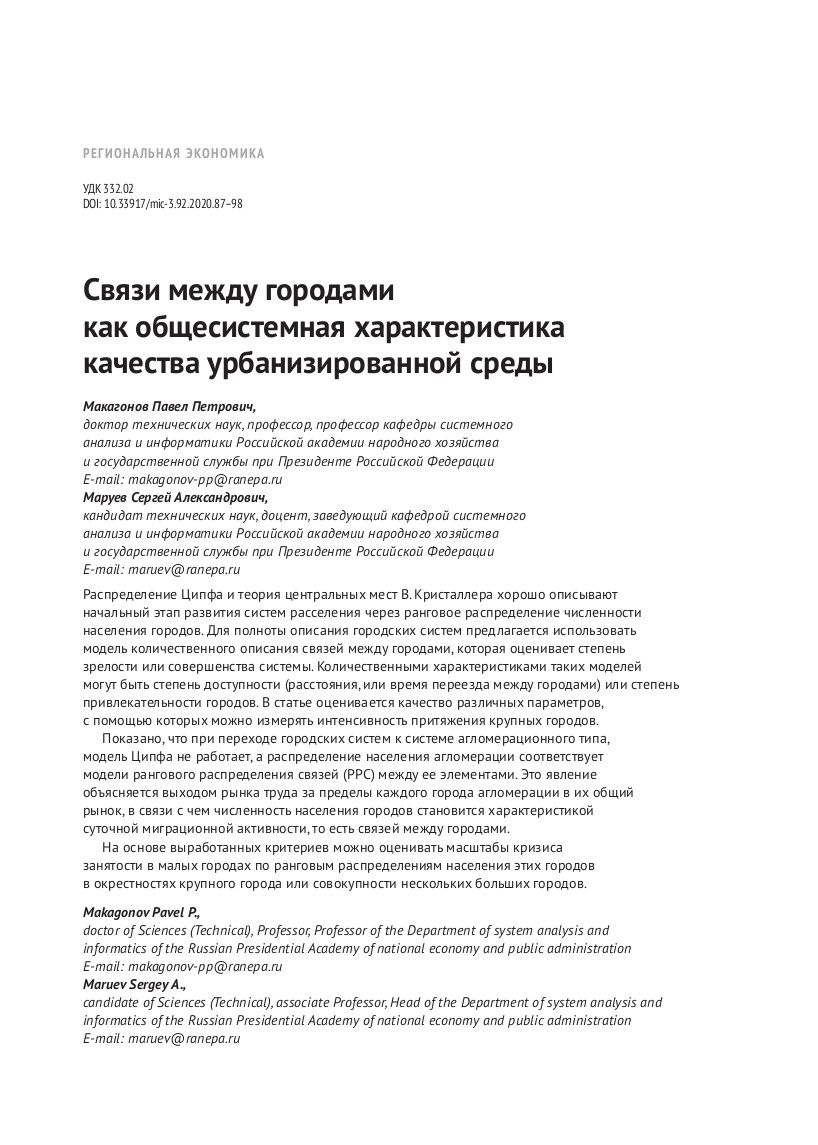Connections between cities as a system-wide characteristic of the quality of the urban environment
DOI: 10.33917/mic-3.92.2020.87-98
The Zipf distribution and V. Kristaller’s theory of Central places describe well the initial stage of development of settlement systems through the rank distribution of the population of cities. To complete the description of urban systems, it is proposed to use a model of quantitative description of connections between cities, which assesses the degree of maturity or perfection of the system. Quantitative characteristics of such models can be the degree of accessibility (distance, or travel time between cities) or the degree of attractiveness of cities. The article evaluates the quality of various parameters that can be used to measure the intensity of attraction of large cities.
It is shown that when urban systems transition to an agglomeration type system, the Zipf model does not work, and the distribution of the population of the agglomeration corresponds to the model of rank distribution of connections (RRS) between its elements. This phenomenon is explained by the exit of the labor market outside of each city of the agglomeration into their common market, in connection with which the population of cities becomes a characteristic of daily migration activity, that is, connections between cities.
Based on the developed criteria, it is possible to assess the scale of the employment crisis in small cities based on the rank distribution of the population of these cities in the vicinity of a large city or a combination of several large cities.
References:
1. Hill B.M. Zipf’s law and prior distributions for the composition of a population. Journal of the American Statistical Association, 1970. 65:1220-1232.
2. Makagonov P.P. Chapter 2: Model of the Imperial Distribution Law for Syntactic and Link Worda in «Perfect» Texts. Chapter in the monograph Computational Models of Semantic Discovery in Natural Language, 2015. IGI Global ISBN 13: 978-1-46668-6908 ISBN10: 1466686901.
3. Makagonov P.P. Managing the development of urban territories. Textbook. Institute for advanced training of civil servants. Russian Academy of Public Administration under the President of the Russian Federation, Moscow: RAGS Publishing house, 2001. ISBN 5 -8081-0080-1.
4. List of the largest urban agglomerations [Electronic resource]. – Access mode: http://www.statdata.ru/largest_cities_world_urban_areas (date accessed: 14.04.2020).
5. Goskomstat Website [Electronic resource]. – Access mode: http://www.gks.ru/ (date accessed: 14.04.2020).
6. The number of the population of the largest urban agglomerations of India (thousands) 2019 (estimate). [Electronic resource]. – Access mode: http://statinformation.ru/nasgor/indiya-gor-agl.html (date accessed: 14.04.2020).
7. Data on the Greater London region [Electronic resource]. – Access mode: http://ru.wikipedia.nom.al/wiki/ (date accessed: 14.04.2020).
8. List of the most populated urban agglomerations [Electronic resource]. – Access mode: https://ru.wikipedia.org/wiki/ (date accessed: 14.04.2020).
9. Data on the population of cities in Canada [Electronic resource]. – Access mode: https://www.turkaramamotoru.com/ru/ (date accessed: 14.04.2020).



